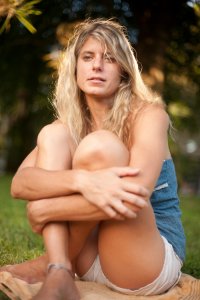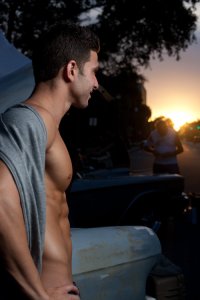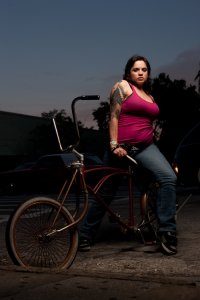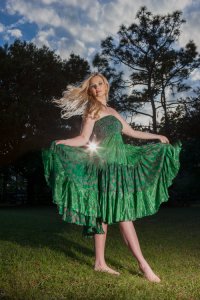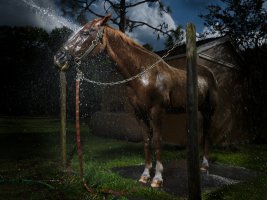GMCPhotographics said:
rishi_sanyal said:
So that the rest of the readers on here - the rational ones - might appreciate how ridiculous of an assertion it is to claim a photographer should be able to perfectly ETTR a Raw within less than 2/3 EV error in the field. Every. Time. No matter how complex the shoot.
I've seen what providing the Raws in the midst of heated discussions like this does. I've done it before. I've learned. Nothing to do with being a lying coward, and everything to do with someone who's learned from past behavior.
Rational? I don't think you are qualified to make that judgement. Someone with an opinion which is way higher than his abilities would suggest, is hardly in any place to consider anyone as rational or irrational. You say that you don't like to be name called (troll and coward) and yet you make statements that claim only the rational would agree with your line of thinking. Yet, many here who are rational don't agree with your line of thinking. To suggest otherwise is a self inflating, circular and egocentric argument.
Actually, to suggest that the
very few who actually had an issue with my 5DS example are 'rationally' approaching this is what is self-inflating, circular, and egocentric. It's pretty much just a couple of CR people (privatebydesign & Sporgon) who are trying to make an issue out of nothing. Please don't artificially inflate the importance of one or two people, or conflate their opinion with 'rational' thought.
GMCPhotographics said:
Well, CanonFanBoy managed to do that just fine...how hard can it be? Meter for the background...meter for the subject...dial in the exposure difference...adjust an re-shoot if necessary. Assuming...one is a Canon "get it right in camera" kind of guy and not a Nikon "bodge it and hope the shadows are pull able later" kind of guy.
Here's a link to CanonFanBoy's image. He seems to have nailed the rising sun exposure and the model's flash exposure correctly :
http://www.canonrumors.com/forum/index.php?topic=27692.105
No need for wide DR here...he got the exposure right, apparently according to his post....it wasn't that hard. Two meterings and a bit of compensation math. I guess that is what I would call rational...the application of science, application of photographic education and a dollop of talent.
Where is the evidence he exposed his highlights within 1/3 EV of clipping in Raw?
? Where did he actually state the Raw R,G,B values that indicate he 'nailed' his exposure (highlights within 1/3 EV of clipping)?
Why do you think his exposure is any better than mine?
Where's his 100% crop?
Why do you think his scene even has as much DR as mine (it doesn't)?
In case you're wondering about that last point: he has the brightest portion of the sunset gradient (conveniently) occluded by the model's head. So, again, what makes you think his example and mine are even
comparable?
GMCPhotographics said:
So what is my point here? Your original photo, although nice was poorly executed and failed to nail the correct exposure of the background.
What was the 'correct' exposure of the background, considering that even slight increases in exposure would've clipped my skies?
Regardless, you hit on one of my original points: a camera with lower DR means that if the photographer can't nail the exposure
perfectly by getting the highlights exactly as close to clipping as possible, then he/she may suffer extra shadow noise in cameras that have elevated read noise (lower DR).
But that's my point: "nailing" it is impossible
because you literally don't have the tools to 'nail' it.
You just don't. No camera today provides the tools to let you know when your Raw channels are close to clipping.
For all intents and purposes, I nailed my exposure, because the camera preview already said I clipped my skies. In fact, according to my camera, I
over-exposed my file.
'Poorly executed'? Says who? In the field my the camera indicated the skies were clipped - in other words, my camera thought I
over-exposed! Who said I didn't 'nail' my exposure?? I was within 2/3 EV of having my red/green channels clipped in the Raw file, while the JPEG preview said I'd already clipped. Who are you to say I didn't 'nail' my exposure? Within 2/3 EV of nailing my exposure is pretty darn close, closer than you could expect of any actual working photographer, but of course not close enough for some forum armchair critic far removed from the realities of actual photography.
Not to mention: you think 2/3 EV higher ISO would've suddenly completely removed all the effects of read noise/banding?
To conclude, though: if you think pro photographers nail their Raw files such that their Raw R,G,B channels in highlights are no more than 10,986 in the Raw file (2^14 - 2,048 Canon offset), please refer me to them. I'd like to hire them in the future, and also check to make sure they're not robots.
GMCPhotographics said:
Indicating that your fading background light was poorly considered and that you used a Shadow pull to save your near-failed photo. It's a poor example of photographic situation that needed a higher DR than the camera was able to offer because you had complete control over the background and the subject light exposures. A better choice is where the subject had too much contrast in a scene to photograph normally (such as sunlight though a semi silhouetted tree) than a photo that uses Shadow pull to hide the mistakes made by the photographer.
Like a couple others here that I accused of throwing red herrings, you also throw one, and have completely missed the point of the example entirely.
'You had complete control over the background and the subject light exposures' --> Yes, that's right, which has
nothing to do with anything.
The model's exposure (via flash) has nothing to do with what we're discussing.
I said the
background, not the
background + model, has too much scene dynamic range for this camera, which is why even when I exposed the sky to be as close to clipping as I thought I could reasonably get it without sacrificing the tones in the sky, the foreground (the grass, NOT the model) could not be brightened much without introducing noise. I didn't want a
black foreground - I wanted
some detail in the grass, because that's
natural.
Perhaps try and understand what's being discussed before so elaborately and passionately commenting on it.
GMCPhotographics said:
A raw file was requested to prove this point. The issue isn't in the file itself but the choice to even use that file to highlight a failed reasoning to start with. The idea that a Canon 5D4 is a worse camera than a Nikon D810 because it can't cover the photographer's ass so well when he/she screws up is hardly the fault of the camera. It's blame shifting the issue from the photographer to the camera.
Your argument makes no sense and presupposes the 5DS (not the 5D4, btw, but who cares about details anyway?) has enough DR to handle every scene ever possible in the world. Which, frankly, is an unrealistic [euphemism] assertion.
Also, the 5D4 (or any Canon camera) was never claimed to be 'a worse camera than a Nikon D810'. Why do you make up false accusations?
GMCPhotographics said:
I could counter this line of thought quite easily by pointing out that in exotic cars, the more exotic they are, the more critical they are of your driving skills and less forgiving of driver mistakes. I believe the same is true of cameras...a professional tool would expect you to have a professional level of metering mastery and of the cameras inherent DR, which I believe is the same for both cameras? Around 12 stops.
The inherent DR is the same for both cameras? You can believe all you want, but then there's reality.
GMCPhotographics said:
While I agree about DPR's work on ISO invariance. I cannot agree with your muddled use of the subject of DR.
Considering I introduced the concept of ISO invariance at DPR and developed the test for it, you may wish to reconsider your opinion of what's 'muddled' and who's 'qualified' or not here (as you've accused me of not being 'qualified' to have these discussions).
GMCPhotographics said:
You are confusing a camera's range of DR with it's ability to pull iso exposure from shadows in a RAW editor. The two subjects are completely different.
...
The only way to truly capture a wide DR, isn't to pull the dark shadows using iso variance...but to shoot at different exposures and combine them in Post production using HDR software. This will produce a clean file with high dynamic range and little to no iso noise.
You apparently don't understand camera dynamic range, which explains your confusion over this entire discussion, but of course doesn't explain your erroneous claims that it is I who is not 'qualified' to talk about this subject.
Camera (input) dynamic range is defined as [highest signal camera can record before clipping / lowest signal camera can record that is not swamped by noise], which usually translates to [full well capacity / read noise] if we're talking about engineering dynamic range. Since full-well capacity per unit area is generally similar for most cameras of equal sensor size (except for the Nikon D810 which has a higher one at ISO 64), differences tend to lie in read noise. Of course another way to capture wider DR is to combine multiple exposures, but that doesn't discount the fact that different cameras have different dynamic ranges to begin with.
If you'd like to understand these topics, though, feel free to chill out and ask some questions, or message me.

